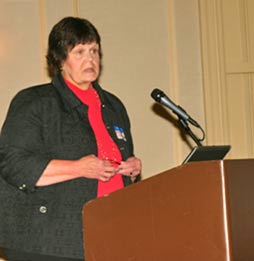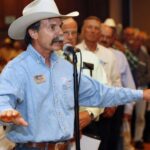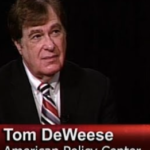Editorial comment: Although over 90% of cattle producers have violently opposed NAIS and all forms of mandatory Animal ID, USDA now renames NAIS and calls it ANIMAL DISEASE TRACEABILITY (ADT) and the staff of USDA is “on the road again” promoting Animal ID. It appears that the wishes of the producers are just picayune insects in the USDA ointment.
In this newly packaged ADT effort, it looks like more meetings, more listening sessions and more “transparent” comment periods.
Can someone kindly send Sec. Vilsack a hearing aide? DD
APHIS holds public meeting to discuss animal traceability
Round two in the struggle to develop an animal identification system or traceability program in this country has begun. The Animal and Plant Health Inspection Service held a public meeting in Kansas City, Mo., May 11 to discuss the new framework for animal disease traceability.

On Feb. 5, USDA announced that it would revise the prior animal identification policy and offer a new approach to achieving animal disease traceability. USDA held a listening tour to get feedback on the National Animal Identification System and discovered that while some people were in favor of the national system, most people were highly critical of the system. Confidentiality, liability, cost, privacy, and religion were among the concerns about NAIS.
After that listening tour, USDA decided to move forward with a new animal disease traceability framework. In March, APHIS met with representatives from the Tribal Nations and in May began a series of hearings across the country to meet with industry representatives. USDA will also re-establish a Secretary’s Advisory Committee on Animal Health with representatives from states, Tribal Nations, industry groups, local farms, organic farmers, and underserved communities to assist in evaluating animal disease traceability.
A working group has been formed to draft the framework of a rule whereby states and tribes will be responsible for their animal disease traceability programs. The objective of the working group is to draft the framework of a proposed rule that will give states and tribes the responsibility for their animal disease traceability programs and direct interstate livestock movement through compliance with performance standards. The working group includes state veterinarians and representatives from the Tribal Nations. Becky Brewer-Walker, Oklahoma State Veterinarian, said there are some very basic and important differences between NAIS and the new framework.
“One difference is that information will be held at the state level,” Brewer-Walker said. “Secondly we will go with low cost, low technology. We will start on the low end and not on the high end with more expensive, more difficult technology.”
Basically, the proposed animal disease traceability program will only apply to animals moving interstate; it will build upon what has been successful such as the brucellosis and scrapie programs; the priority will be cattle; it will be cost effective by using basic identification tags like the nine-character “brite” tags; and it will progress over time and allow for advanced technology.
“I think the keys are starting slower, low tech, low cost, and keeping it at the state level,” Brewer-Walker said.
Brewer-Walker said she is adamant that the national system stay in place for those people who have already bought into that system or who are already involved in a value-added program. She said each state would have the ability to decide what information it needs to maintain in order to find an animal in case of a disease outbreak.
APHIS hopes to publish a proposed rule by the winter of 2010 followed by a 90-day comment period. A final rule will be published eight to 10 months after the close of the comment period. Some requirements, such as animal ID and traceability performance standards, may be phased in over time, following publication of the final rule.
In addition to the public meeting held in Kansas City on May 11, a public meeting was held in Riverdale, Md., and on May 17 at the Crowne Plaza Denver International Airport, Denver, Colo.



